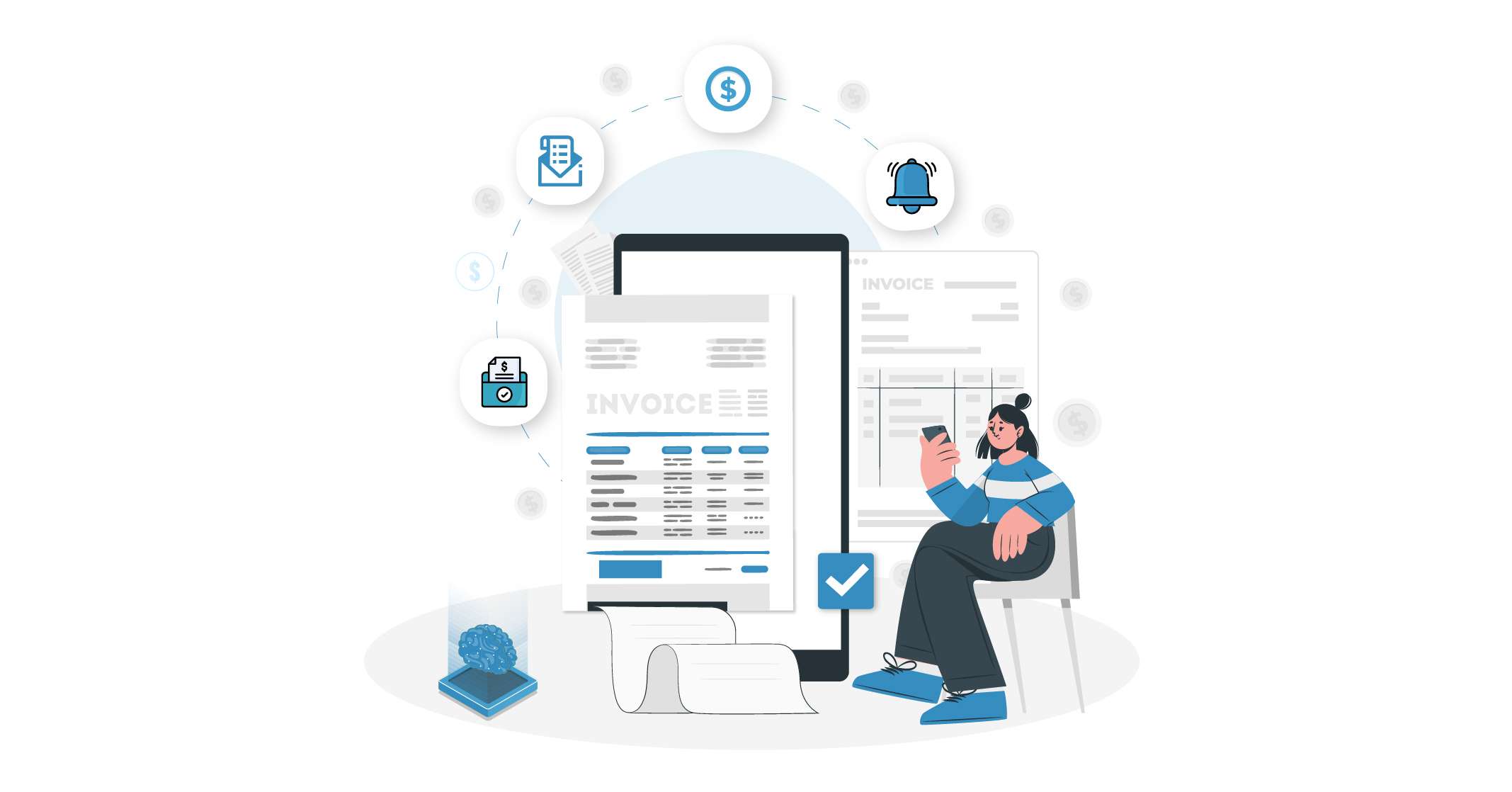Managing Invoices and Payments is crucial for any business, whether you’re a freelancer, a small business owner, or managing a large enterprise. Invoices keep track of what your business is owed, and a solid invoice tracking system ensures that payments are received on time. In this guide, we’ll dive deep into invoice tracking, explain its importance, explore the difference between invoice tracking and monitoring, and provide solutions for efficient invoice management, with a focus on keywords like invoice tracking online, vendor invoice management and tracking, and more.
What is Invoice Tracking?
Invoice tracking refers to the process of managing, monitoring, and ensuring that invoices are sent out to clients and payments are received on time. It helps businesses stay on top of their cash flow, avoid late payments, and manage accounts receivable efficiently.
Using tools like invoice tracking software, invoice tracking templates, and spreadsheet systems can streamline this process, making it easier to follow up on outstanding invoices, track invoice numbers, and check payment statuses.
Importance of Invoice Tracking
- Cash Flow Management: Proper invoice tracking helps maintain a healthy cash flow by ensuring timely payments. A delay in tracking invoices could lead to missed payments, which can affect the business’s ability to meet its financial obligations.
- Organization and Record Keeping: Tracking invoices helps you maintain a well-organized record of all your sales and payments. This is particularly important for tax filing, auditing, and financial reporting.
- Reduces Payment Delays: By regularly monitoring invoices, you can follow up with clients who haven’t paid, reducing the chances of late or missed payments.
- Improved Client Relationships: By having an efficient vendor invoice tracking system, businesses can maintain better communication with their clients, reminding them of due payments without delays.
Invoice Tracking vs. Invoice Monitoring
![]()
While often used interchangeably, invoice tracking and invoice monitoring have subtle differences:
- Invoice Tracking: Involves keeping an organized record of all invoices, tracking invoice numbers, payment dates, and ensuring that payments are received.
- Invoice Monitoring: Refers to keeping a close eye on the status of invoices to identify delays, discrepancies, or potential issues with payments.
The key difference is that invoice tracking is a more passive activity that focuses on record-keeping, while monitoring is a proactive approach that involves actively checking for overdue payments and sending reminders to clients.
Comparison Table:
| Feature | Invoice Tracking | Invoice Monitoring |
| Purpose | Record-keeping and organization | Actively following up on payment statuses |
| Tools Used | Invoice tracking software, spreadsheets | Alerts, notifications, reminders |
| Focus | Keeping track of all issued invoices | Ensuring timely payments |
| Proactive Approach | No | Yes |
Tools for Invoice Tracking
![]()
There are many tools and software available to make invoice tracking easier and more efficient. Here’s a breakdown of the most common options:
1. Invoice Tracking Online
Many businesses are moving toward invoice tracking online, using cloud-based systems that allow easy access and management from anywhere. Tools like Serina, Zoho Invoice, FreshBooks, and QuickBooks offer online invoicing platforms that allow you to send, track, and manage invoices seamlessly.
2. Vendor Invoice Tracking
Managing invoices from vendors is crucial to ensure smooth business operations. A vendor invoice tracking system helps businesses stay on top of their accounts payable, ensuring that they pay vendors on time and avoid late fees.
3. Free Invoice Tracking
Several free tools provide basic invoice-tracking functionalities. While they may not have all the features of paid versions, platforms like Wave and Invoice Simple offer decent free invoice-tracking software for small businesses.
4. Invoice Tracking Software
Invoice tracking software can automate the entire invoicing process, from generating invoices to following up with clients. Some popular options include:
- Zoho Invoice: Offers comprehensive invoicing and payment tracking tools.
- QuickBooks: A versatile solution for both invoicing and accounting.
- FreshBooks: Ideal for small businesses and freelancers.
5. Invoice Tracking Excel
If you’re looking for a simple, low-cost solution, invoice-tracking Excel templates can help you manage invoices manually. You can easily create a custom invoice tracking spreadsheet or download a pre-made invoice tracking template in Excel to start organizing your invoices.
6. Invoice Tracking Apps
Mobile apps like Zoho Invoice, FreshBooks, and Invoice2go allow you to manage invoices on the go. These invoice-tracking apps are perfect for small business owners and freelancers who need flexibility.
7. Invoice Tracking Template
You can use a ready-made invoice tracking template to organize your invoices. These templates can include fields for invoice numbers, client details, due dates, payment dates, and more. Many templates are available in Excel format, offering a straightforward way to track invoices without advanced software.
Importance of Vendor Invoice Tracking
![]()
Effective vendor invoice tracking is critical for maintaining strong relationships with suppliers and ensuring smooth financial operations. Here are some reasons why tracking vendor invoices is essential:
1. Avoiding Late Payments
Late payments can damage vendor relationships and lead to penalties. By tracking vendor invoices, businesses can ensure timely payments, avoid late fees and maintain good standing with suppliers.
2. Improved Cash Flow Management
Knowing the payment status of all vendor invoices helps businesses manage cash flow better. Accurate tracking of outstanding invoices allows for better planning of outgoing payments and financial forecasting.
3. Dispute Resolution
Tracking vendor invoices ensures discrepancies between what was ordered, delivered, and billed can be identified and resolved promptly. This minimizes the risk of overpayments or double payments.
4. Streamlined Accounts Payable Process
Automating vendor invoice tracking reduces the manual workload of AP teams and speeds up the invoice approval and payment process. This allows businesses to handle a larger volume of invoices with greater accuracy and efficiency.
5. Audit Readiness
Vendor invoice tracking ensures that all invoices are accurately recorded, approved, and paid, providing a clear audit trail for financial reporting and compliance purposes.
Monthly Vendor Invoice Tracking: Ensuring Timely Payments and Streamlined Processes
Tracking vendor invoices every month is crucial for maintaining financial control and ensuring smooth operations. Monthly vendor invoice tracking involves systematically recording, reviewing, and processing all invoices received from suppliers within a given month. By implementing this practice, businesses can avoid late payments, identify discrepancies early, and maintain accurate financial records.
Using tools like invoice tracking software or spreadsheets, businesses can create a structured workflow that allows for timely approvals and payments, improving vendor relationships and reducing the risk of penalties. Automated reminders and detailed reporting help ensure that no invoice slips through the cracks, enabling companies to manage cash flow more effectively while keeping all vendor accounts in good standing.
While monthly invoice tracking ensures all invoices are processed and paid on time, purchase order management helps keep track of goods and services ordered and received. This article will explore the importance of both practices, explain how to track them efficiently and outline the benefits of integrating them with automated solutions.
Advanced Features to Look for in Invoice Tracking Software for Smooth Invoice Tracking
![]()
When choosing invoice tracking software, here are some features to look for:
- Invoice Number Tracking: The ability to track unique invoice numbers across multiple clients and vendors.
- Expense and Invoice Tracking: A comprehensive solution should allow businesses to track both expenses and invoices, providing a full view of the company’s financial health.
- Payment Tracking: The software should flag overdue invoices and allow for easy follow-up with clients.
- Invoice Tracking Logs: This feature provides a history of actions taken on each invoice, helping you see when the invoice was sent, when payment was received, and more.
How AP Automation Enhances Invoice Tracking?
![]()
Traditional invoice tracking involves manually inputting invoice data, tracking payment statuses, and following up with vendors. AP automation software simplifies this by automating these tasks. Here’s how it enhances the invoice tracking process:
1. Automated Data Entry
One of the biggest challenges in manual invoice tracking is data entry errors. AP automation software automatically captures invoice data using OCR (Optical Character Recognition) technology, reducing errors and the time spent on data entry.
2. Centralized Dashboard for Invoice Monitoring
With AP automation software, businesses can view all invoices in a single, centralized dashboard. This allows them to monitor the status of each invoice in real time, see when payments are due, and identify any bottlenecks in the approval process.
3. Workflow Automation for Approvals
AP automation streamlines the invoice approval process. Once an invoice is received, the software routes it to the appropriate person for approval based on pre-set rules, significantly reducing delays.
4. Faster Invoice Processing
By automating the invoice tracking and approval process, AP automation invoice processing software reduces the time it takes to process invoices. This ensures that payments are made on time, improving vendor relationships and avoiding late fees.
5. Real-Time Tracking and Alerts
AP automation software provides real-time tracking and alerts for overdue invoices, ensuring businesses can follow up promptly. This proactive approach minimizes payment delays and keeps the accounts payable process running smoothly.
Importance of Using AP Automation for Invoice Tracking
![]()
1. Reduced Errors
Manual data entry and invoice tracking often lead to mistakes, such as entering incorrect amounts or missing due dates. AP automation software reduces these errors by automatically capturing and verifying invoice data. Check out the benefits of AP automation.
2. Improved Cash Flow Management
Accurate invoice tracking helps businesses better manage their cash flow. With AP automation, companies can gain better visibility into upcoming payments, helping them plan their financial strategy and avoid cash shortages.
3. Time and Cost Savings
AP automation significantly reduces the time spent on manual invoice tracking, freeing up staff for more strategic tasks. Additionally, businesses can save money by reducing late fees and penalties associated with missed payments.
4. Enhanced Compliance and Auditing
AP automation software maintains a digital record of all invoices, approvals, and payments. This makes it easier to track invoice histories and comply with auditing and regulatory requirements.
Conclusion
Proper invoice tracking is essential for maintaining a healthy business. From using invoice automation and tracking software to employing a monthly invoice tracking spreadsheet, businesses can stay organized, reduce payment delays, and maintain better relationships with their clients and vendors. By understanding the differences between invoice tracking and invoice monitoring, and using the right tools and practices, you can streamline your invoicing process and improve your financial management.
FAQs on How to Keep Track of Invoices and Payments
Q1: What’s the most effective way to keep records of invoices?
Using a combination of invoice tracking software and Excel spreadsheets is one of the most efficient ways to keep track of invoices.
Q2: What is an invoice tracker?
An invoice tracker is a tool or software that helps you manage and monitor your invoices from creation to payment.
Q3: How does invoice tracking differ from monitoring?
Invoice tracking focuses on record-keeping, while invoice monitoring is about actively checking and ensuring timely payments are made.
By adopting efficient systems and tools, businesses can automate much of the invoicing process and focus on what matters—growing their business!


